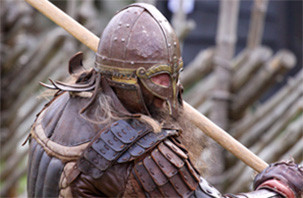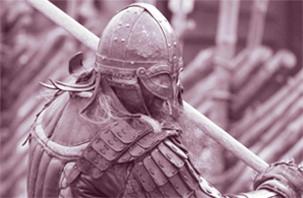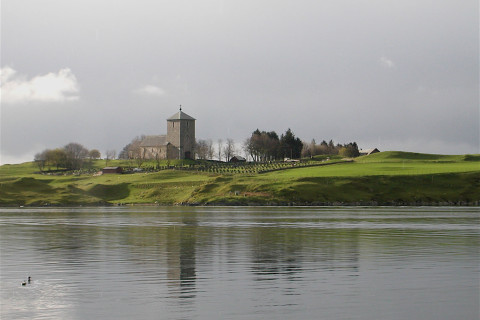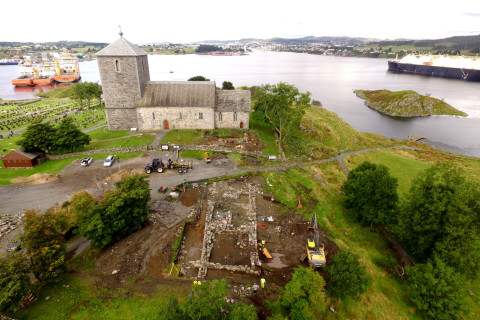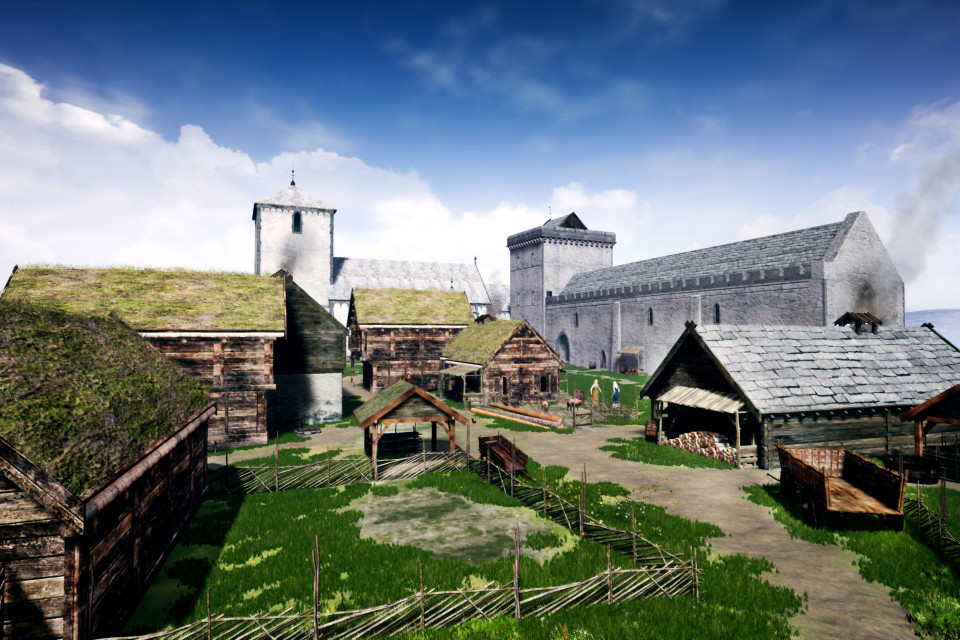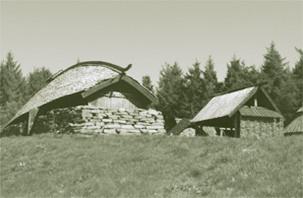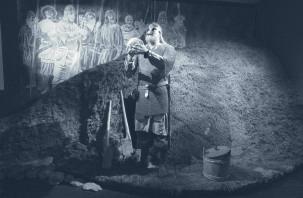Haakon V Magnusson
Text: Marit Synnøve Vea

Royal letter issued by Haakon V at Avaldsnes in 1308.
(Hákon Háleggr – Haakon “the longlegged”) (1270 – 1319) King of Norway from 1299 – 1319
Haakon (Håkon) V Magnusson was the grandson of Haakon Haakonsson. His father was Magnus “the Law-mender” Haakonsson and his mother was Ingeborg Eriksdatter of Denmark. Haakon V succeeded to the throne after the death of his brother, Erik, in 1299. He made Oslo a capital of Norway, bestowing on it the same status as Bergen
Haakon V – a Christian king with European contacts
Even though Haakon V strengthened the power of the king in relation to that of the bishops, he put a strong emphasis on Christianity and Christian charity. He dressed modestly in his everyday life and gave his sheriffs strict instructions to treat his subjects justly. Haakon V ordered the construction of hostels for the use of pilgrims travelling to the tomb of Olav the Holy in Nidaros. And it was probably Haakon V who had the hostel to house pilgrims and other travellers at Avaldsnes.
Haakon V was also in close contact with the royal courts in Europe. He was a close friend of the French king Philip the Fair who, aided by the people, had gained control of the nobility and the secular power of the church. Perhaps it was this that inspired Haakon to establish his collegiate church and state administration system.

Face found under the floor at St. Olaf’s church during the restoration of the floor in 2000. (Photo: Ø.Iversen)
Haakon V makes St Olaf’s Church at Avaldsnes a collegiate church
Haakon V Magnusson chose St Olaf’s Church at Avaldsnes as one of four royal, collegiate churches in Norway. As a result, St Olaf’s came to play a very important role in the administration of the Western Norway. The other three collegiate churches were situated in Oslo, Bergen and Tønsberg. St Olaf’s at Avaldsnes is the only collegiate church that is still standing today.
A collegiate status meant that the king himself could decide who were to be its ministers and councillors. Elsewhere, this was the prerogative of the bishops. The collegiate churches also had men who were able to write and could look after the administration of the state. This was an important factor at a time when the king and the church were vying for power. The system of collegiate churches was an innovation which gave Norway a state church alongside the Roman Catholic Church.
Avaldsnes – important for Haakon V Magnusson
Haakon V Magnusson was perhaps the king who resided for the longest time at Avaldsnes during the High Middle Ages. Five letters written by Haakon at Avaldsnes have been preserved. They show that the king dealt with matters of government while he was here. Haakon V also mentioned the royal church at Avaldsnes in his will.
In 2012, The Royal Manor Project discovered the ruins of the medieval royal court where the king and his chancellors resided.(See: Haakon Haakonsson)
Haakon V – the last male heir of the Fairhair dynasty who reigned as king in Norway
Haakon married Euphemia of Rûgen and they had a daughter, Ingebjørg, but no son. Haakon therefore changed the law of succession and allowed Ingebjørg to marry a Swedish duke: Erik Magnusson.
In 1319, their son, Magnus, was chosen as the king of Sweden when he was 3 years old. Haakon V Magnusson died in the same year, his daughter’s son Magnus then also became king of Norway and Norway entered into a personal union with Sweden. Magnus was the first member of the Swedish Folkung dynasty to rule in Norway.
Haakon V Magnusson was buried at St Mary’s Church in Oslo.
Back
